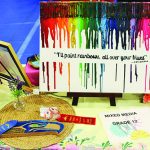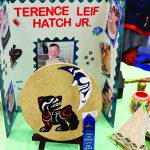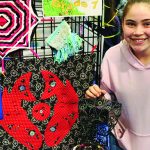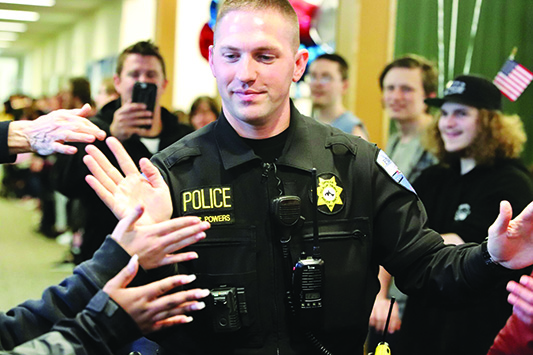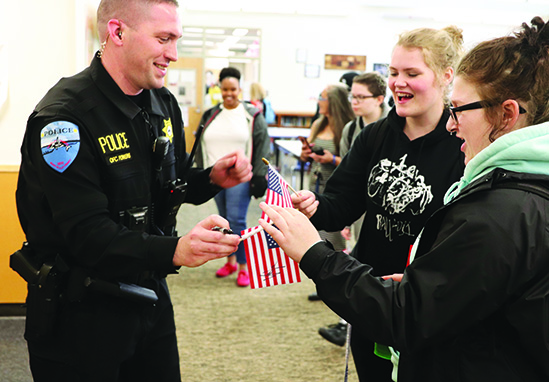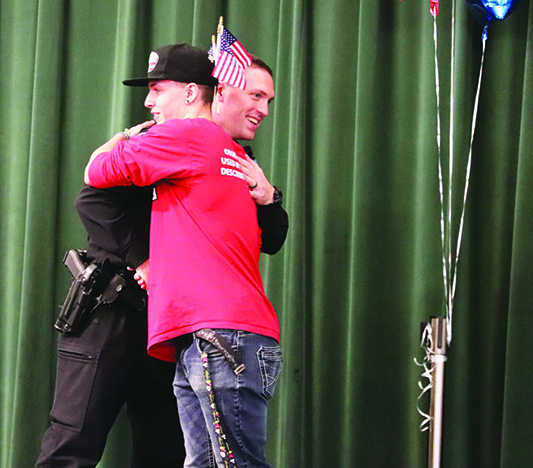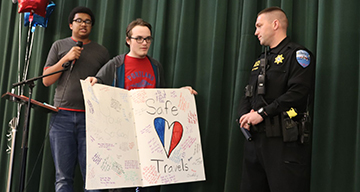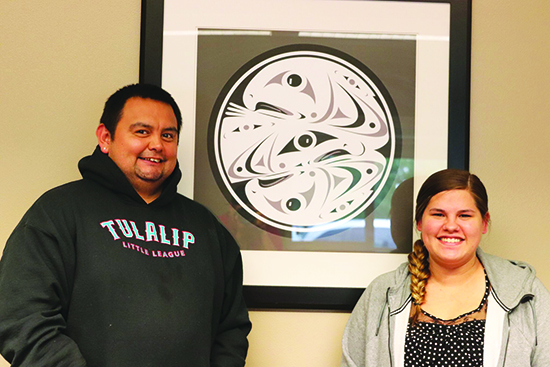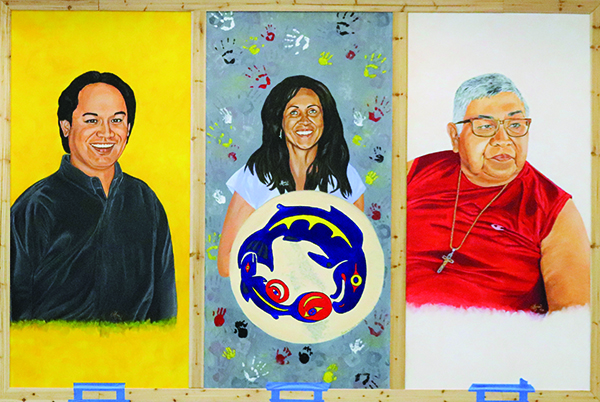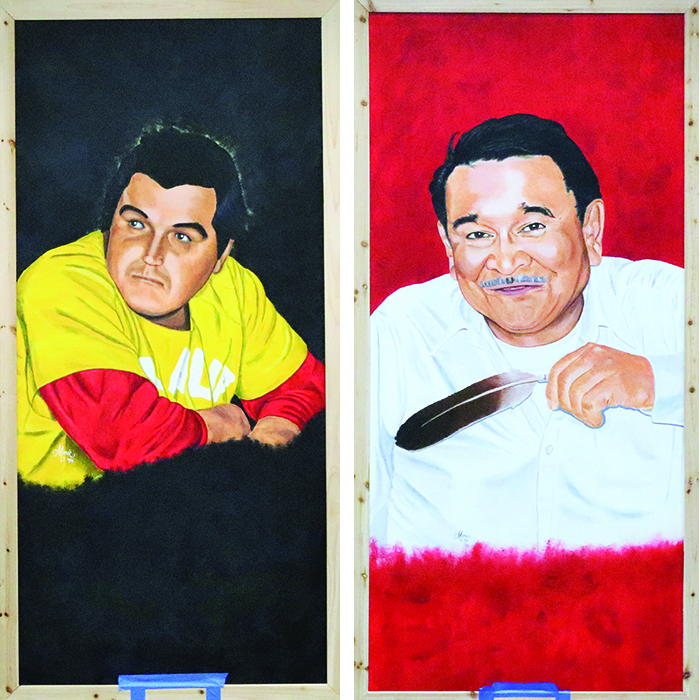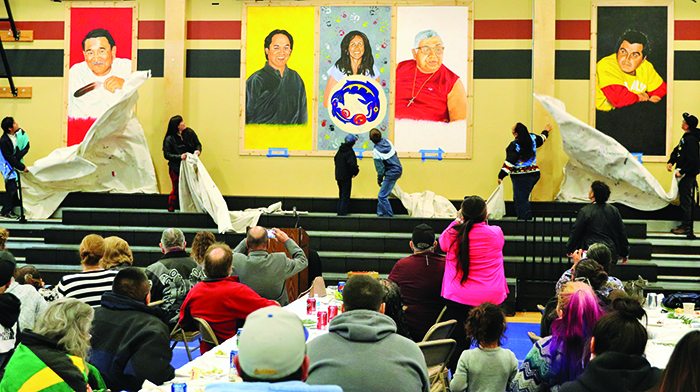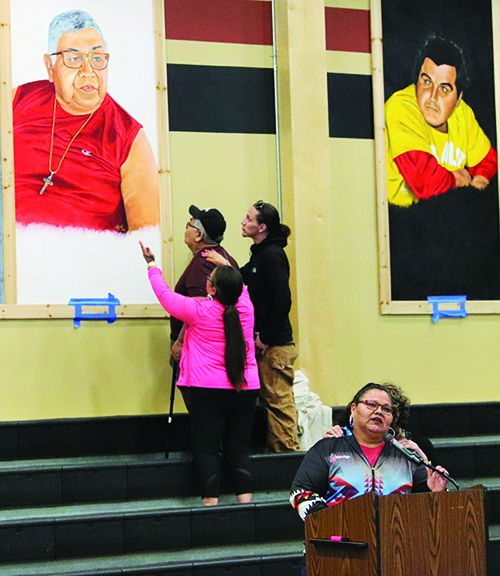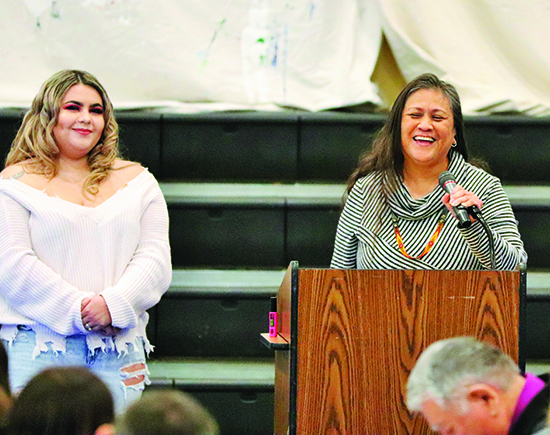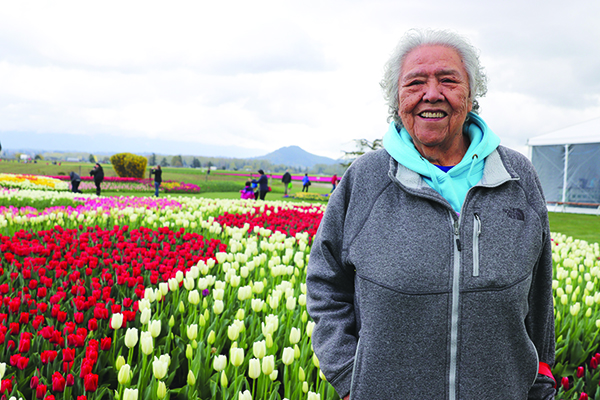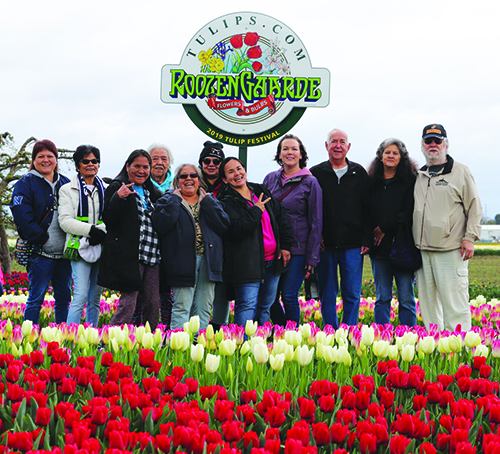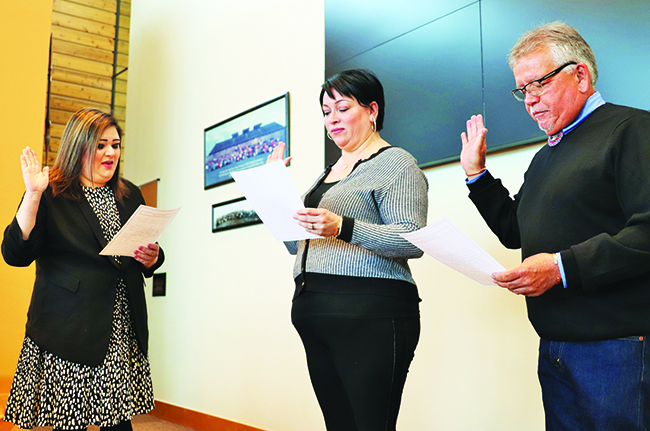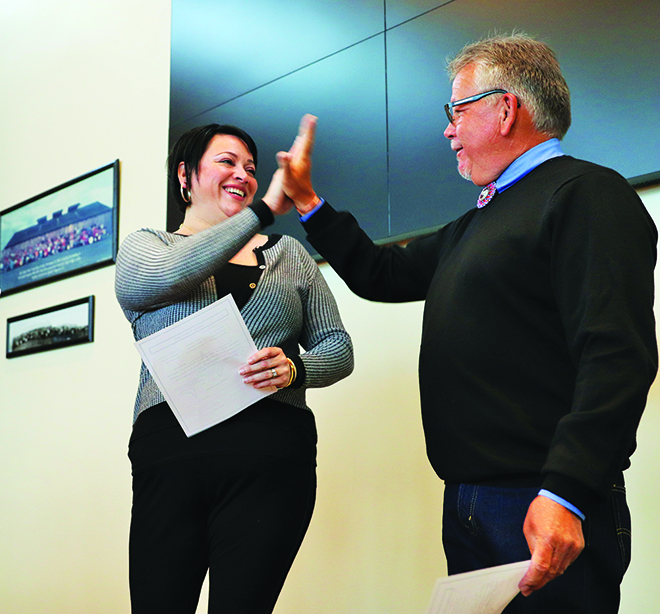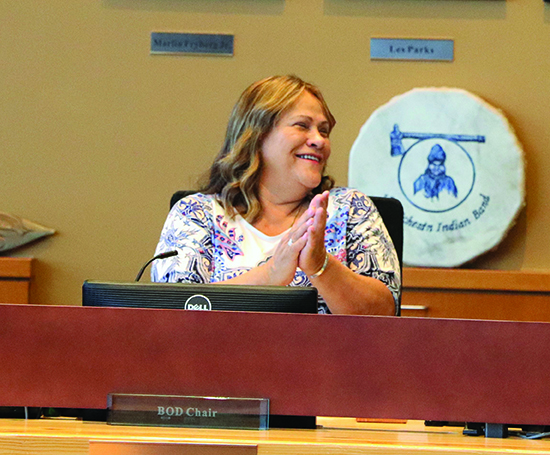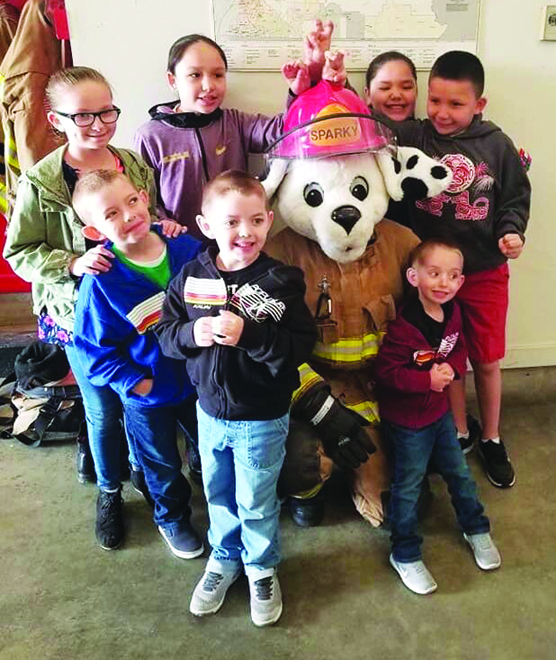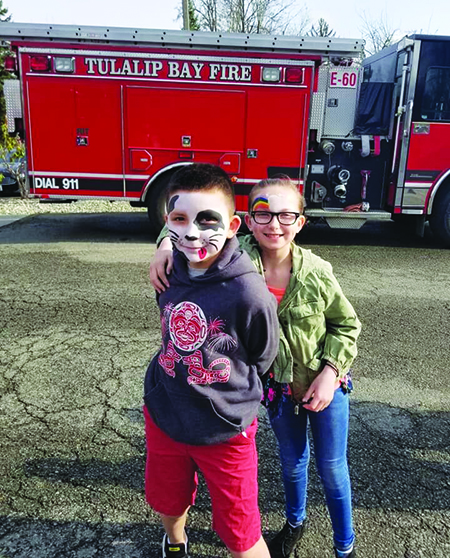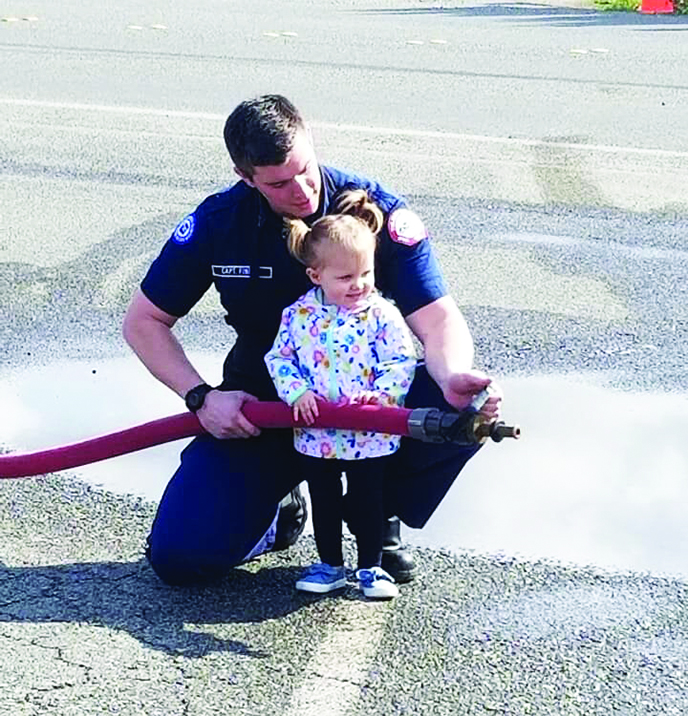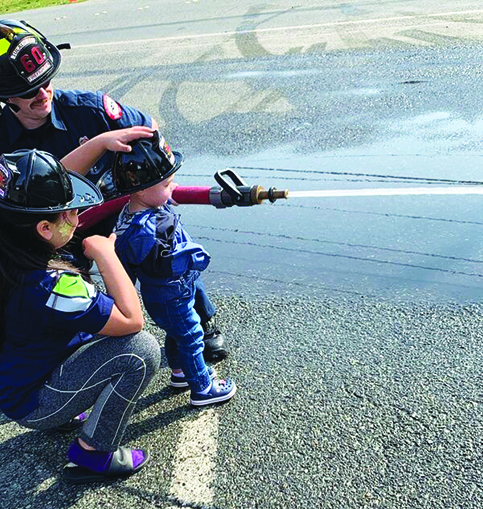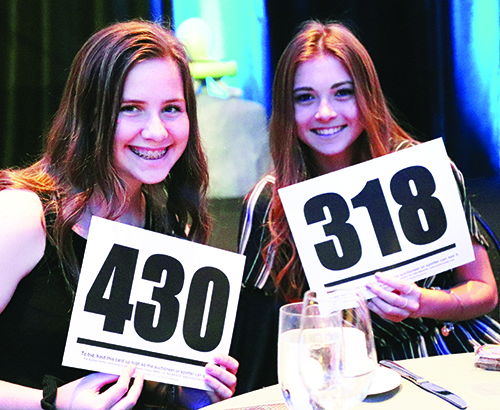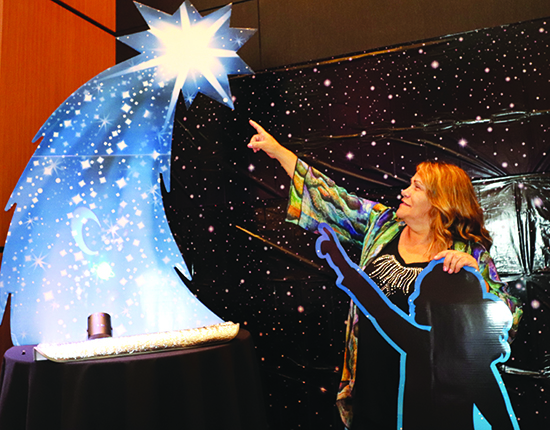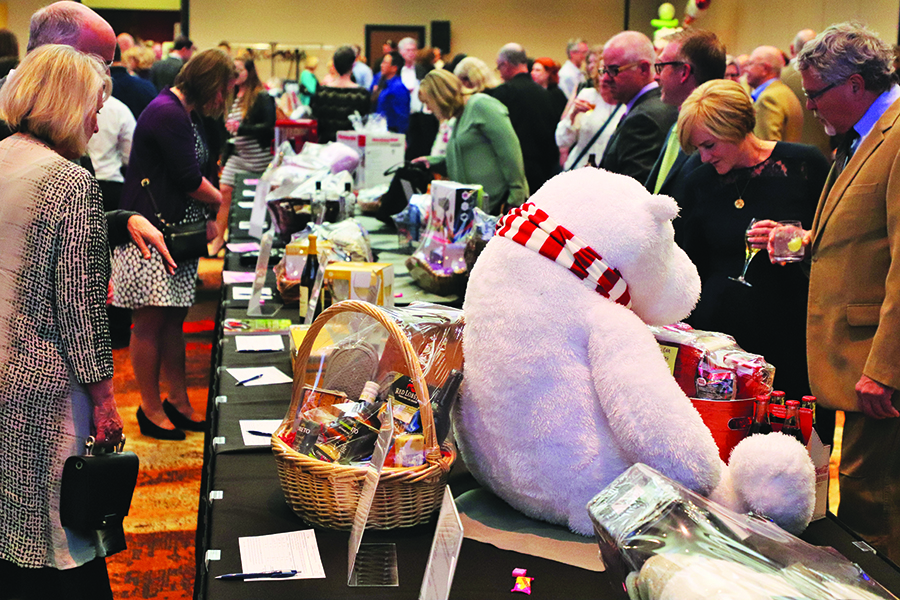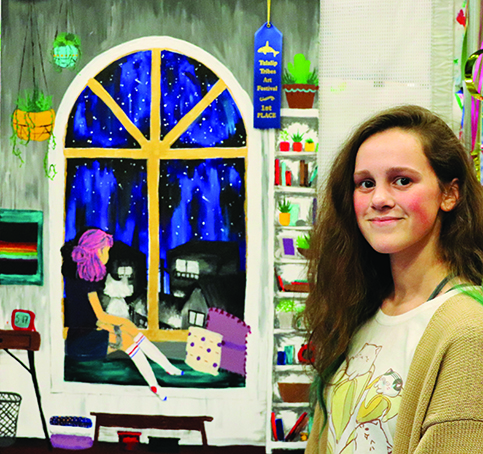
By Micheal Rios, Tulalip News
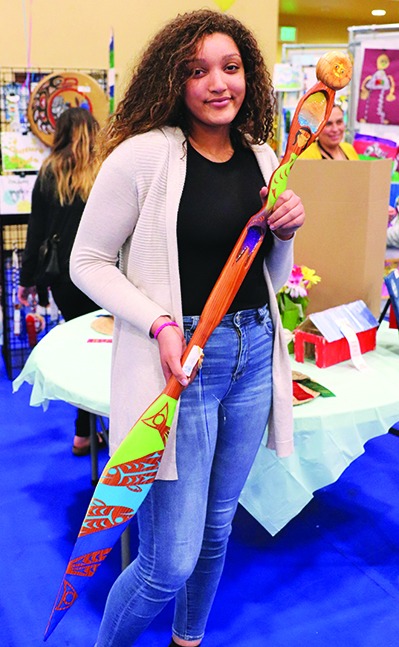
Hundreds of artistically inclined students strolled through the makeshift art gala that was the Don Hatch Youth Center on Thursday, April 18th, for the annual Native American Student Art Festival. Accompanied by their families, friends and teachers, the student-artists ranging from 1st to 12th grade wowed festival attendees and judges with their imaginative creations.
“The Art Festival is an opportunity for each student to express themselves in a positive way. It is the largest community event we have where we get to showcase our Native students,” explained Jessica Bustad, Positive Youth Development Manager. “It’s the pride each of the students have in their artwork, their parents and community members coming together to support our children that make this event so great.”
For more than two decades now, Marysville School District has partnered with the Tulalip Tribes to dedicate an evening to the art scene created by emerging Tulalip artists and other Native students within the district. The Festival gives these young people an opportunity to show off their creative talents to the community, while getting a chance to take home a coveted 1st place ribbon.
Artists were able to win 1st, 2nd or 3rd place, plus honorable mention, in a variety of artistic mediums. Categories included culture, drawing, painting, writing, mixed media, sculpture, digital art, and pure heart. The top four from each grade and category not only received a ceremonial ribbon as recognition for their talents, but a monetary prize as well.
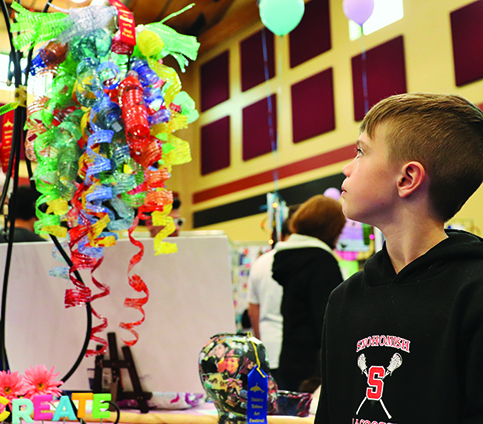
grader. “My inspiration was Chihuly’s art, like his glass blowing. First, I had to cut all around these plastic water bottles to make the swirly parts. Then I painted every single one a different color because if they were all the same color it wouldn’t be artistic.”
“Everyone that attends is a winner by the end of the event because they’ve helped to create unity and teamwork,” said Josh Fryberg, Youth Services Manager. “The Festival turned out amazing. From all of the families sharing a meal together to seeing the looks on each person’s face when they win a raffle to seeing all the art being showcased for all to see.”
This year’s Native Art Festival received a whopping 700+ submissions, with the most popular category being painting. There were many young artists who showed off their diverse talents by submitting artwork in as many categories as they could. Taylee Warbus and Samara Davis were two such overachievers who claimed top honors in multiple categories.
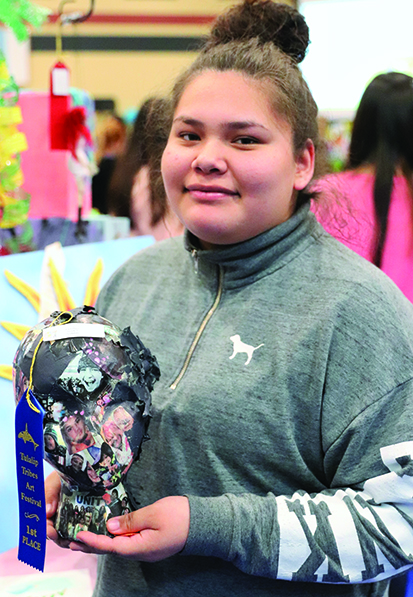
“It was amazing to see just how talented our Native students are; the new ideas and concepts they come up with every year continue to surprise us judges,” marveled Native Advocate Doug Salinas. “Every kid has the capability to be an artist because their imagination has no limits.”
Native culture and art are often thought of us intrinsically tied together or, in the case of Savannah Black Tomahawk and Lilly Jefferson, they are sewn together. According to their mothers, neither Savannah nor Lilly had ever sewn before prior to creating traditional ribbon skirts to enter in the Festival. By putting a modern twist on a traditional concept, Savannah’s Disney princess skirt and Lilly’s metallic blue with shimmery pink ribbons both received high praise and earned an additional ribbon – 2nd place and 1st place, respectively.
“As coordinating staff, we look at every single piece of artwork and recognize how much work each student puts in. Some art pieces show real vulnerability in the students, they are showing themselves and expressing their thoughts, feelings and dreams,” added Jessica. “It is also very gratifying when students are already coming to us with their creative ideas for next year’s Art Festival.”
If you missed out on this year’s Student Art Festival, each and every piece of authentic Native American art that received a winning ribbon will be on display at the Hibulb Cultural Center from now – May 5th.

